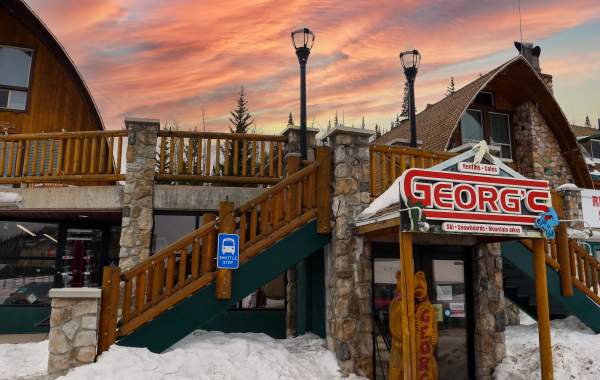Cross-country Skiing and Snowshoeing
Some of the nation’s best snow conditions occur year after year in the mountains east of Cedar City. The snow conditions and terrain on Cedar Mountain, including Dixie National Forest and Cedar Breaks National Monument, are some of the best in the country for cross-country skiing and snowshoeing.
Located 22 miles from Cedar City off Highway 14, Dixie National Forest’s Deer Hollow is ideal for cross-country skiing, snowshoeing, and fat biking. There are nearly 37 kilometers (23 miles) of groomed cross-country ski trails, with loops designed for every level and type of skier, and more than 2.5 kilometers (1.6 miles) of snowshoe and fat bike trails on the east side of the recreation area that lead you to the stunning Lava Field and Navajo Lake Overlooks. For a PDF of the Deer Hollow Winter Recreation Area CLICK HERE.
Cedar Breaks National Monument is also a fave for cross-country skiing. Park at the junction of Highway 143 and Highway 148, then follow the groomed trail for spectacular views at the Chessman Overlook. Stop at the warming yurt (weekends only) for hot cocoa and conversation with a park ranger. Cedar Breaks’ staff also offers free guided snowshoe hikes every Saturday throughout January and February.
Rental Shops
Cedar Sports Outdoor Gear and Rentals
- 80 S Main St
- (435) 586-5651
Southern Utah University Outdoors
- 351 W University Blvd
- (435) 865-8704
Brianhead Sports
- 269 S Village Way
- (435) 677-2014
Georg's Ski Shop & Lodge
- 612 S Hwy 143
- (435) 677-2013
Outfit your entire family with excellent ski and snowboard gear through the Georg's Rental Shop. Offering the best equipment and the lowest…
Plan Your Trip
Brochure
More information
Cedar Mountain Nordic Ski Club (CMNSC)
A nonprofit group was formed to promote cross-country skiing in the Cedar City/Brian Head area and educate the public about the benefits of Nordic skiing. Visit CMNSC at cmnsc.org for trail descriptions and maps, or call (435) 867-4644.
Dixie National Forest
District Headquarters
820 N Main St
Cedar City, Utah 84720
(435) 865-3200
Statewide Avalanche Forecast
(888) 999-4019 or
Utah Avalanche Center website.
Packing the proper range of layers and attire will make a big difference in having a great experience. Pack extra layers to prepare for changes in temperature that come with elevation changes. Remember that whether you are hiking a waterfall or strapping on a set of skis it is always important to remember to plan ahead and be prepared with the proper apparel for the weather and activity! #RecreateResponsibly





